Last updated: December 16, 2024
Article
Places of Disability History and the WWII Home Front: Mental Hospital Civilian Public Service Camps and the National Register of Historic Places
California
Livermore Veterans’ Association Hospital (Livermore Veterans Hospital)
Mennonite Central Committee, November 1945 – September 1946
The Livermore Veterans’ Hospital in Livermore, California, hosted CPS Camp 150 from 1945-1946. A total of 132 COs worked at the camp. Building 62 of the Livermore Veterans’ Association Hospital was added to the National Register of Historic Places in 2020, under the Multiple Property Listing “United States Third Generation Veterans Hospitals, 1946-1948.” The site is listed under Criteria A and C, for evolution of healthcare and medicine in the United States and architectural significance.
Connecticut
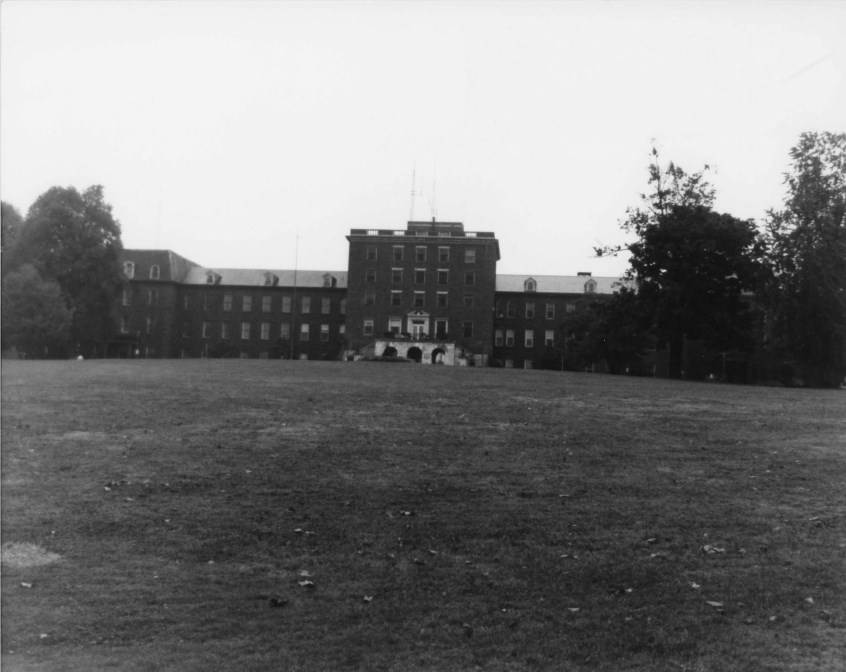
Prepared by Kate Ohno, Connecticut Historical Commission.
Connecticut General Hospital for the Insane (Connecticut Valley Hospital)
American Friends Service Committee, March 1943 – September 1946
A total of eighty-five men served in the CPS camp at Connecticut Valley Hospital. They worked as ward attendants, providing custodial care in the hospital. Alex Sareyan, who later wrote The Turning Point: How Persons of Conscience Brought About Major Change in the Care of America’s Mentally Ill, served as the Assistant Director of the CPS unit. He began a public relations unit for the hospital that met with local newspapers. Connecticut Valley Hospital was listed in the National Register of Historic Places because it was the first significant public effort to care for the mentally ill in the state, and the only public hospital in the state until 1904.
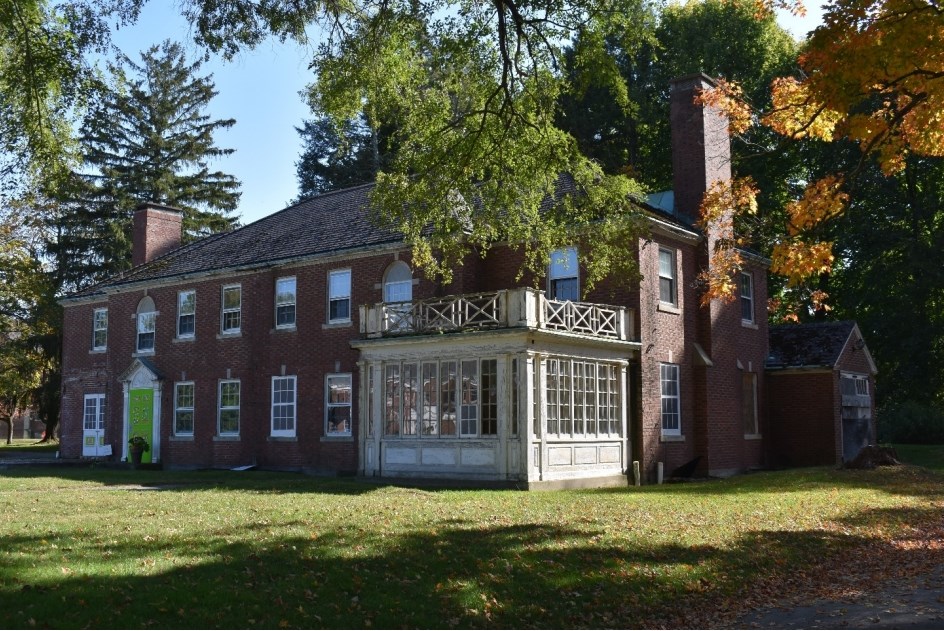
Photograph located in the National Register of Historic Places Form: Fairfield Hills Campus Historic District. Taken by Eryn Boyce, The Public Archeology Laboratory, Inc.
Fairfield Hills Campus Historic District (Fairfield State Hospital)
Brethren Service Committee, March 1943 – September 1946
The Brethren Service Committee operated CPS camp 82 out of Fairfield State Hospital in Newtown, CT. A total of 74 COs served in ward attendant, clerical, agricultural, construction and maintenance, motor vehicle operation, technical, or food preparation positions. Most men were attendants. Fairfield State Hospital was listed in the National Register in September 2024 as Fairfield Hills Campus Historic District. The site is listed for its significance as an example of the “Cottage Plan” for mental hospitals, which encouraged rural settings and aesthetically pleasing architecture for the moral treatment of the patients. The ways in which patients were treated at Fairfield State Hospital changed with the general evolution of mental health treatment in America.
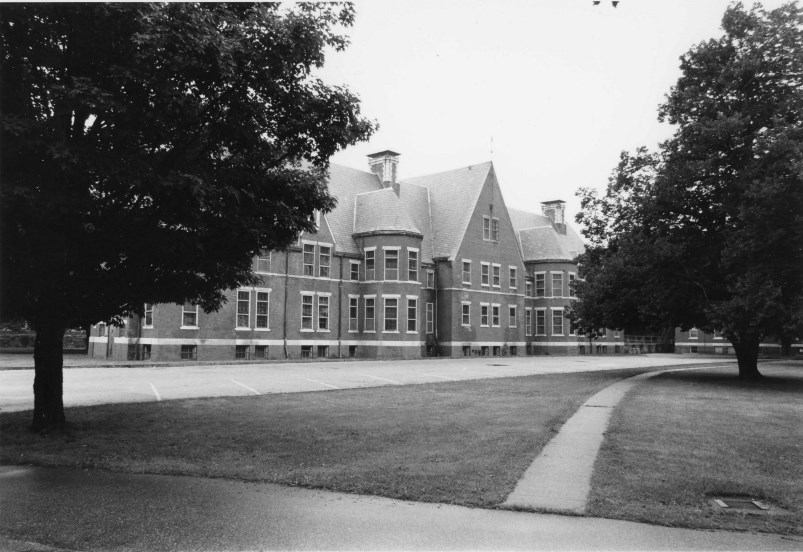
Photograph located in the National Register of Historic Places Form: Norwich Hospital District. Prepared by Bruce Clouette and Matthew Roth, Historic Resource Consultants, Edited by John Herzan, National Register Coordinator.
Norwich Hospital District (Norwich State Hospital)
Brethren Service Committee, March 1943 – September 1946
One hundred and ten total COs served at CPS camp 68 in Norwich State Hospital. Most served as ward attendants. In 1944, eleven of the COs served as human guinea pigs in a jaundice experiment. The next year, four other COs volunteered for an experiment on infectious mononucleosis. The site was added to the National Register of Historic Places in 1988 because of its representation of the way the mentally ill were treated for in the early 20th century (the buildings have not been changed from the 1930s, meaning that they are still similar today to the way the COs interacted with them).
Maine
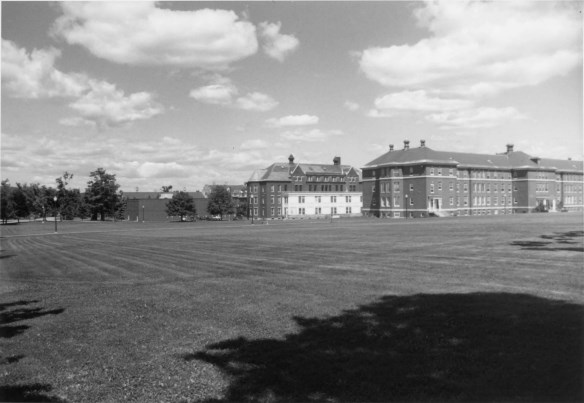
Photograph located in the National Register of Historic Places Form: Maine Insane Hospital (Boundary Increase). Taken by Kirk F. Mahoney, Maine Historic Preservation Commission.
Maine Insane Hospital (Augusta State Hospital)
Brethren Service Committee, April 1943 – May 1946
The Maine Insane Hospital in Augusta, Maine was added to the National Register of Historic Places in 1982, with a boundary increase in 2001. Because of structures dating from the 19th century to the 1920s, the site was listed as a significant for the infrastructure of mental health in both periods. It also is one of the earliest state-built mental hospitals (with the exception being Massachusetts). The site was home to CPS camp 88, which had a total of 33 workers between 1943 and 1946. Understaffing was a problem at the Hospital, and COs worked an average of 60 hours per week.
Maryland
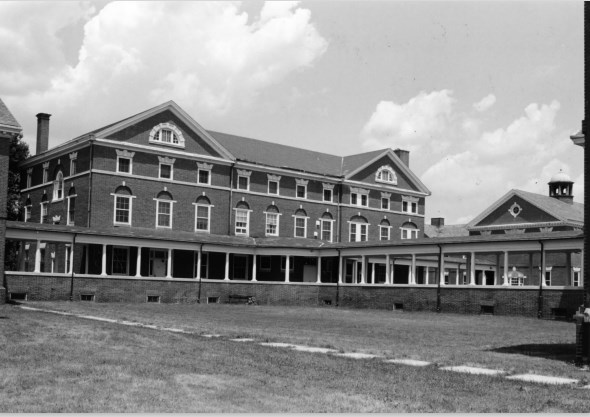
Photograph located in the National Register of Historic Places Form: Warfield Complex, Hubner Building, T. Building. Taken by Kenneth M. Short, Maryland State Historic Preservation Office.
Warfield Complex, Hubner Building, T Building (Springfield State Hospital)
Brethren Service Committee, August 1942 – July 1946
From 1942 to 1946, a total of 119 COs worked at CPS camp 47 at Springfield State Hospital in Sykesville, MD. COs here served in a variety of roles, and a large number of COs meant that the hospital could afford to provide training in psychiatric treatments. Ward attendants at Springfield served as housekeepers, aided in feeding, bathing, and dressing patients, and provided dressings, electric shock therapy, and injection-based treatment. Three of the hospital complex’s buildings, the Warfield Complex, Hubner, and T Buildings were listed in the National Register of Historic Places for their role in advancements in mental healthcare. In particular, the hospital included treatments in the 19th century for the previously neglected group of female mental hospital patients.
Michigan
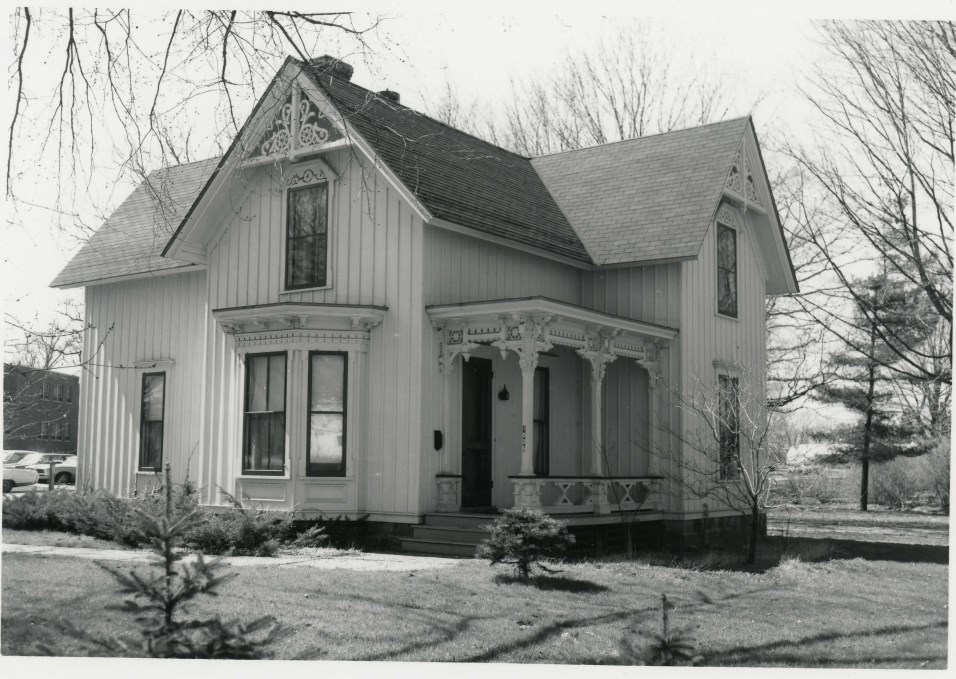
Photograph located in the National Register of Historic Places Form: State Hospital Gatehouse. Taken by Balthazar Korab, Kalamazoo Historical Commission.
Kalamazoo State Hospital
Mennonite Central Committee, December 1943 – July 1946
The Mennonite Central Committe operated CPS camp 120 out of Kalamazoo State Hospital. A total of 41 COs worked at the site, all of whom identified as Mennonites. They attended 15 lectures on the care of mentally ill patients, followed by lectures on psychology, mental hygiene, and mental health. Two structures from the Kalamazoo State Hospital complex, the Water Tower and the Gatehouse, were added to the National Register in 1972 and 1983, respectively. Both were listed as significant because of their architecture, not because of the medical history of the site.
New Jersey

Photograph located in the National Register of Historic Places Form: Illumination Gas Plant for the New Jersey Asylum for the Insane at Morris Plains. Taken by Kurt Hirschberg, Drew University.
New Jersey State Asylum for the Insane (Greystone Park State Hospital)
Mennonite Central Committee, January 1943 – August 1946
CPS camp 77 at Greystone Park State Hospital had a total of 179 workers. The majority served as ward attendants, and the unit Community Service Committe provided the COs with opportunities to help the hospital and surrounding community. The COs reestablished the hospital’s library and used the hospital’s workshops to build games and puzzles for the patients. They donated blood to community hospitals, led a boys’ club in at a local settlement house, made Christmas baskets for needy families, and led programs in community churches. One of the COs at Greystone Park was Frank L. Wright, Jr., who wrote the National Mental Health Foundation report Out of Sight, Out of Mind. The Hospital’s Gas Plant, which converted soft coal into coal gas and powered the hospital from 1876 until the 1930s, is listed on the National Register of Historic Places as one of the last surviving gas plants in a state asylum.
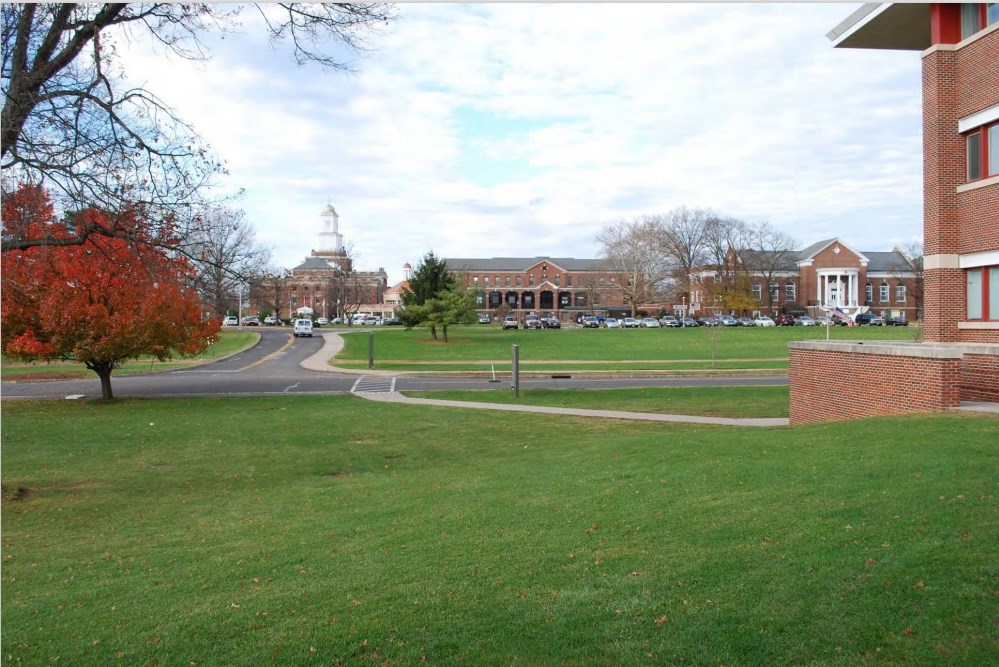
Photograph located in the National Register of Historic Places Form: United States Second Generation Veterans Hospitals. Taken by Trent Spurlock.
Lyons Veterans Administration Hospital Historic District (Lyons Veterans Hospital)
Brethren Service Committee, April 1943 – August 1946
The Brethren Service Committee operated CPS camp 80 in Lyons, New Jersey, for three years. A total of 249 COs worked at the Lyons Veterans Hospital, mostly serving as ward attendants. Camp 80 was unique in that a majority of the COs who worked over the course of the three years were married. At one point, four married couples were allowed to live together in a farmhouse on hospital grounds, but criticism from newspapers and the Veterans of Foreign Wars (VFW) about privileges awarded to COs caused administrators to move the men back into segregated dormitories. The hospital grounds (including the farmhouse and other agricultural buildings on its campus) were listed in the National Register as a historic district in 2013. Its significance is as an example of second-generation veterans’ hospitals in the US (structures built by the Veterans Administration from 1929 to 1950.
New York
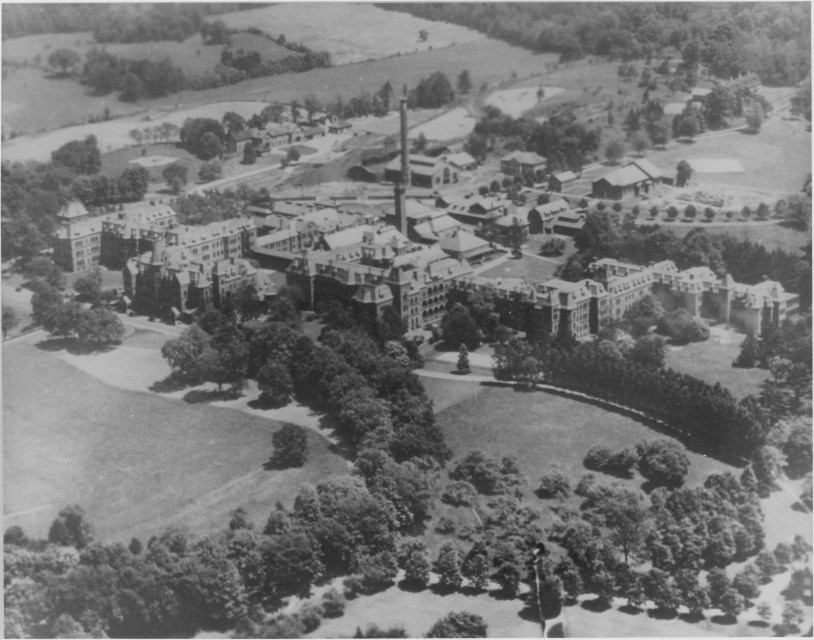
Photograph located in the National Register of Historic Places Form: National Historic Landmark, Hudson River State Hospital, Main Building. Prepared by Carolyn Pitts, National Park Service.
Hudson River State Hospital
Mennonite Central Committee, April 1945 – April 1946
CPS camp 144 was the only camp in New York operated by the Mennonite Central Committee. A total of 31 COs worked at the camp, and one-third of them had experience in other mental hospital units. They served in wards for “disturbed” or “incontinent, feeble, or occasionally assaultive” patients, administered insulin and electric shock therapy, and worked in the infirmary, admissions, laundry, and tubercular ward. The main building of the Hudson River State Hospital was registered as a national historic landmark in 1989 as the first significant example of High Victorian Gothic architecture in a US institution. The site’s construction and landscape were influenced by Kirkbride’s hospital.
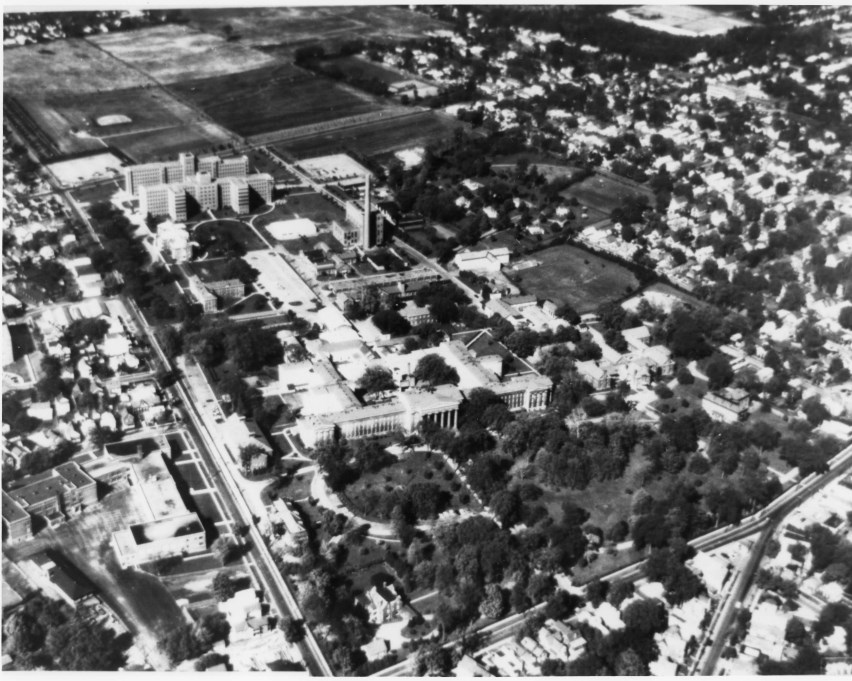
Photograph located in the National Register of Historic Places Form: National Historic Landmark, Utica State Hospital, Main Building. Prepared by Carolyn Pitts, National Park Service.
Utica State Hospital
Utica state hospital was supposed to be the home of CPS camp 65. The unit was meant to have twenty-five men, but the announcement of the creation of the CPS unit received pushback from hospital employees, veterans groups, and the Association of State Civil Service Employees. The opposition was concerned about wage loss and displacement of the permanent employees of the hospital. The camp was abandoned before opening in 1942. The main building of the hospital was listed as a National Historic Landmark in 1989, and the hospital was listed in the National Register of Historic Places as the first state-owned and operated institution to care for the mentally ill, and the largest mental hospital in the US at the time of its completion in 1843.
Ohio
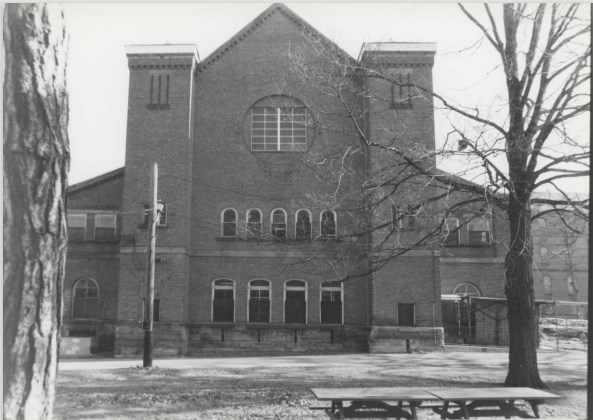
Photograph located in the National Register of Historic Places Form: Central Ohio Lunatic Asylum. Taken by Edward Lentz, Columbus Landmarks Foundation.
Central Ohio Lunatic Asylum (Columbus State Hospital)
Brethren Service Committee, December 1942 – June 1946
Fifty-six COs worked at the CPS camp operated at Columbus State Hospital. In addition to serving as attendants, Columbus State Hospital had a unit of COs who volunteered as human guinea pigs in experiments related to starvation and illness. The COs in this unit were also part of the CPS union first started in 1944 by Quaker COs. The union fought for improvements in pay, working conditions, and rights. The hospital was listed in the National Register in 1986 for its late Victorian Gothic institutional architecture.

Photograph located in the National Register of Historic Places Form: Southern Ohio Lunatic Asylum. Taken by Theresa Stebbins, Montgomery County Historical Society.
Southern Ohio Lunatic Asylum (Dayton State Hospital)
Brethren Service Committee, October 1943 – June 1946
The Brethren Service Committee operated CPS camp 70 from 1943 to 1946. A total of 46 COs worked at Dayton State Hospital caring for about 1800 patients. The facility was in close proximity to several universities. In 1945, two COs began classes at the University of Dayton, two at the YMCA College, and one at Miami-Jacobs College. The site was listed in the National Register as the Southern Ohio Lunatic Asylum for its Victorian architecture and its significance as the state’s second major institution for the mentally ill.
Oregon
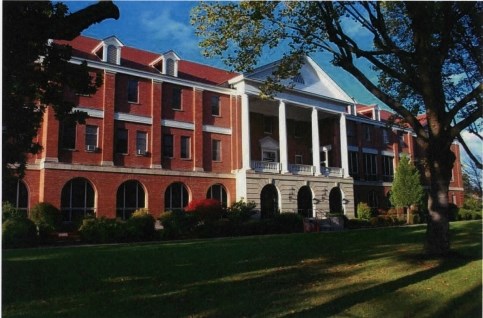
Photograph located in the National Register of Historic Places Form: United States Second Generation Veterans Hospitals. Taken by Trent Spurlock.
Roseburg Veterans’ Administration Hospital (Roseburg Veterans Hospital)
Mennonite Central Committee, December 1945 – December 1946
A total of 42 COs worked for a year at the CPS camp located in the Roseburg Veterans Hospital. Upon their arrival, men had an orientation program where they spent three days in each of the hospital’s wards to see how mental illnesses were treated. All of their patients were former soldiers. Roseburg Veterans’ Administration Hospital was listed in the National Register as part of a Multiple Property Site Listing of second-generation veterans' hospitals in the US.
Pennsylvania
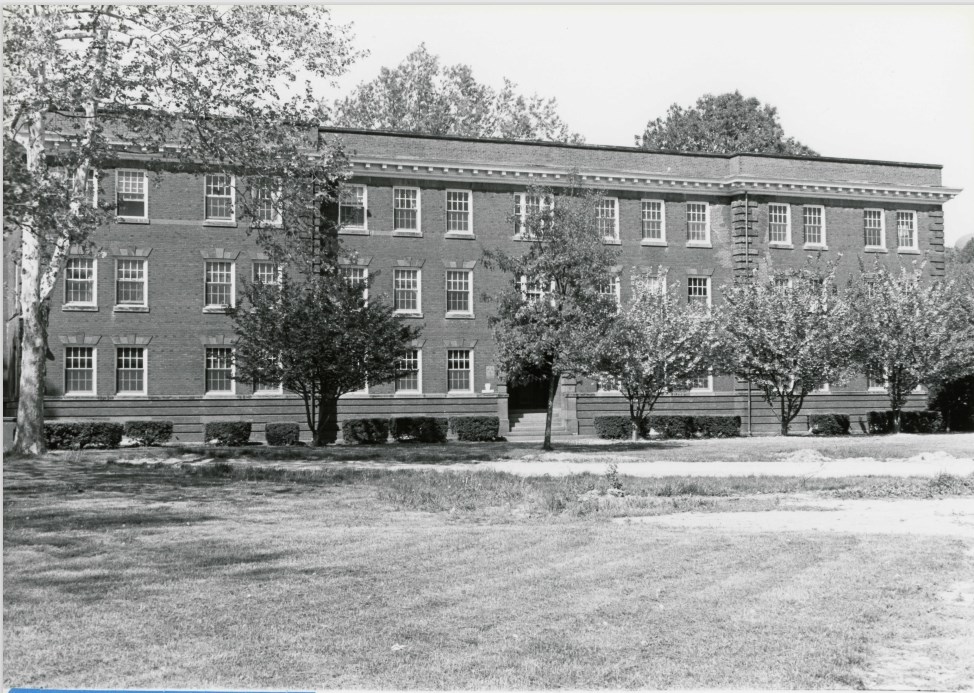
Photograph located in the National Register of Historic Places Form: Pennsylvania State Lunatic Asylum. Taken by Susan Zacher, Bureau for Historic Preservation, Pennsylvania Historical and Museum Commission.
Pennsylvania State Lunatic Hospital (Harrisburg State Hospital)
Mennonite Central Committee, April 1943 – April 1946
A total of 69 men worked at CPS camp 93 at Harrisburg State Hospital. The COs and some of their wives worked as ward attendants at the site. From 1944 – 1945 the position also included clerical work. Men participated in a Christian worker’s school with two courses: The Life and Teachings of Jesus and The Work of the Church. Unlike other camps, men at CPS camp 93 were able to live in single or double rooms in the hospital, as opposed to barracks or outside housing. The hospital was listed in the National Register of Historic Places as the Pennsylvania State Lunatic Hospital in 1985. It was listed because of its status as the first state hospital in Pennsylvania designed for treatment of mental illness. Authorization for the site began in 1845, after Dorothea Dix lobbied for mental healthcare reform in Pennsylvania. The style of the buildings was influenced by the Kirkbride hospital.
Utah
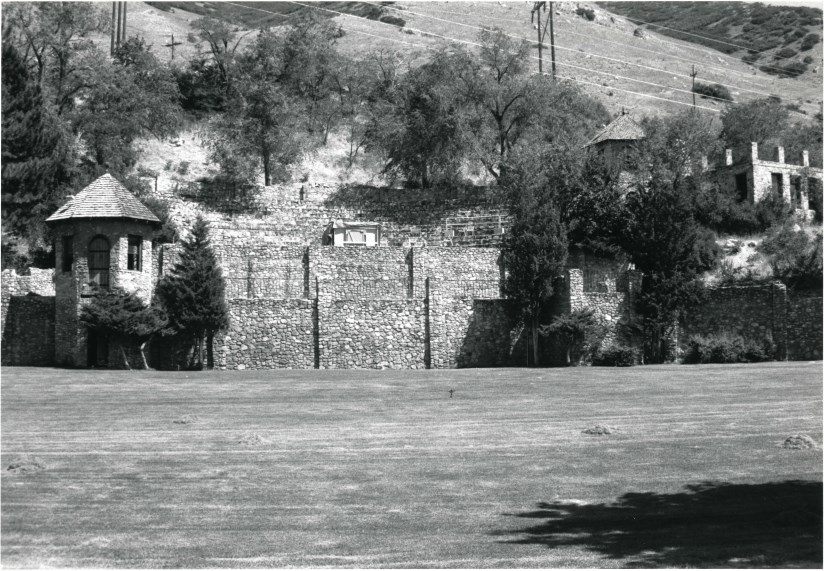
Photograph located in the National Register of Historic Places Form: Recreation Center for the Utah State Hospital. Taken by Roger Roper, Utah State Historical Society.
Utah State Hospital
Mennonite Central Committee, March 1943 – April 1946
The Mennonite Central Committee operated a CPS camp in the Utah State Hospital in Provo, Utah, for three years. 38 total COs worked at the camp over the course of its existence, performing a variety of jobs to make up for staffing shortages. Like other camps, the COs developed a religious community: they met weekly for Sunday school lessons, sang in choirs, and taught a summer Bible school. Some men also earned course credit at Brigham Young University. Two parts of the Utah State Hospital were listed on the National Register. The Superintendent’s House and the Recreation Center were listed as examples of Works Progress Administration (WPA) projects in Utah and the impact of the New Deal on the state.
Vermont
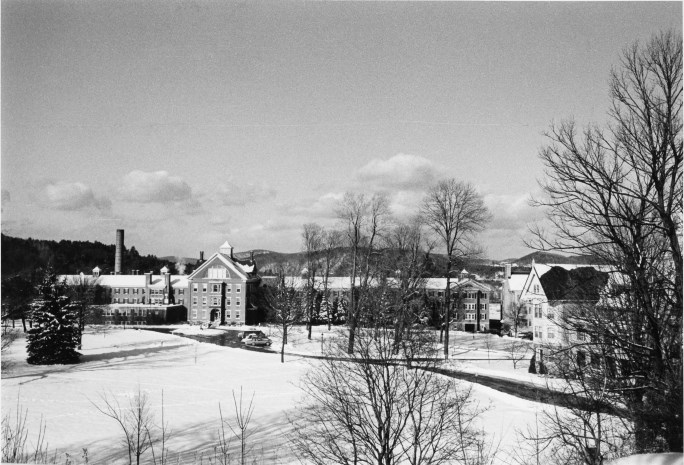
Photograph located in the National Register of Historic Places Form: Brattleboro Retreat. Taken by Stephen Sanders, Historic Preservation Consultant.
Brattleboro Retreat
American Friends Service Committee, February 1943 – September 1946
CPS Camp 87 had a total of forty-five workers from 1943 to 1946; twenty-five of them had served at other camps prior to serving at Brattleboro Retreat. The men, like at other camps, took the time to cultivate a culture at the camp: there were weekly religious services, a personnel secretary for the unit, and an education secretary who budgeted money for educational speakers and books. The site was listed in the National Register for Historic Places in 1984 as one of the first original psychiatric hospitals in Vermont, and the US at large.
Virginia
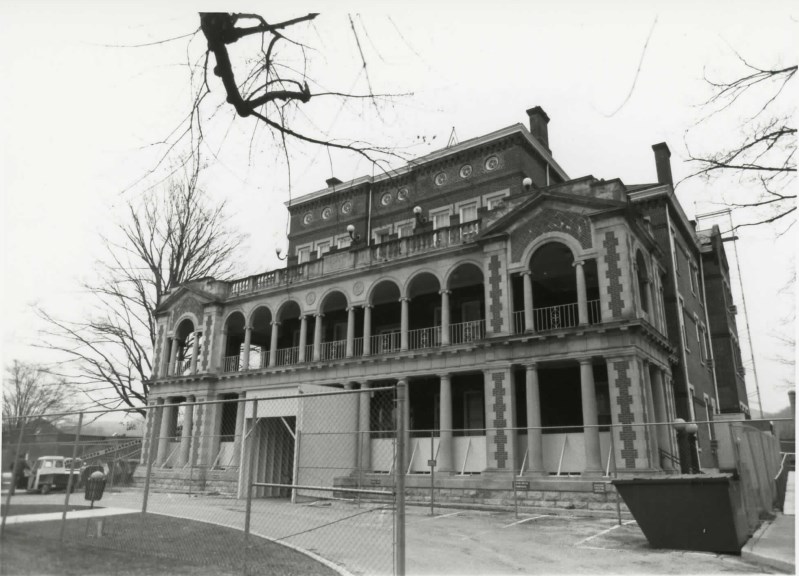
Photograph located in the National Register of Historic Places Form: Henderson Building, Southwestern State Hospital. Taken by Julie Vosmik.
Southwestern State Hospital
Brethren Service Committee, June 1943 – June 1946
A total of 55 men served as COs over the three years the camp was established. Men at Southwestern State Hospital identified as Brethren and German Baptists. The existing conditions of the hospitals were poor compared to other sites. Southwestern State Hospital appeared in an expose on conditions in Virginia state mental hospitals, after a permanent employee of the hospital was indicted for manslaughter. He had kicked and struck a patient several times in the stomach; irregular perforation of the small intestine was ruled as the cause of death. Most of the COs at the camp served as ward attendants, working alongside permanent attendants. Two structures in the hospital are listed as sites on the National Register, the Henderson Building and the Tubercular Building. Both are prominent as part of Virginia’s efforts to provide mental illness treatment in the late 19th century and early 20th century.

Photograph located in the National Register of Historic Places Form: Western State Hospital Complex. Prepared by Division of Historic Landmarks Staff, Virginia Division of Historic Landmarks.
Western State Hospital Complex (Western State Hospital)
Mennonite Central Committee, August 1942 – September 1946
One hundred and ten men worked at CPS camp 44 in Western State Hospital in Staunton, Virginia. The unit had poor conditions, with the COs working 76 hours per week, sleeping in the wards, eating poor quality food, and combatting a rat infestation due to open garbage bins. The COs documented evidence of poor patient care and working conditions, sparking a community protest in 1943 that led to the resignation of the superintendent. Conditions did not improve until 1944, when the Brethren Service Committee, Mennonite Central Committee, and American Friends Service Committe all met with hospital superintendents, camp directors, the National Service Board of Religious Objectors (NSBRO), Selective Service, and the Virginia State Hospital Board. Unit morale improved after changes to working hours and conditions was provided by the superintendent. The group had the time now to appoint a camp historian, hold softball games, and organize lectures in foreign relief, poultry raising, music, and typing. Western State Hospital was added to the National Register of Historic Places in 1969 due to architectural significance, with boundary increases in 2006, 2007, and 2010.
Washington
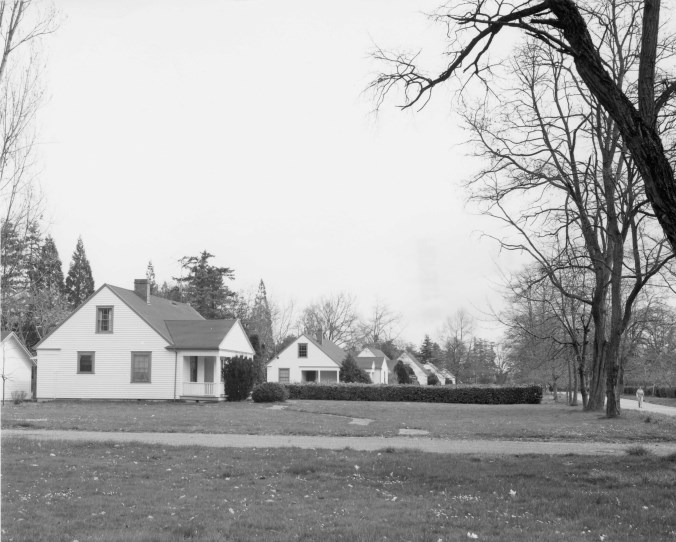
Photograph located in the National Register of Historic Places Form: Ft. Steilacoom. Taken by Jacob Thomas.
Ft. Steilacoom (Western State Hospital)
Brethren Service Committee, September 1942 – October 1945
Thirty-six COs worked at the Western State Hospital CPS camp in Ft. Steilacoom, Washington. Fifteen of them had previously worked at a CPS camp in Cascade Locks, Oregon. While most men served as ward attendants, others served as camp president, truck driver, kitchen worker, horticulturist, and hospital photographer. In addition to making a camp newsletter, the COs created the Pacifist Information Center, which hoped to better familiarize the public with the pacifist movement. They developed a library full of pacifist literature. While other COs struggled with poor living conditions and a lack of state support, the governor of Washington was fully supportive of the development of CPS camps in state facilities. Ft. Steilacoom was listed in the National Register of Historic Places in 1977, for its historical significance as a military fort and a hospital.
This article was written by Emma Gruesbeck, an intern at the Cultural Resources Office of Interpretation and Education, through a cooperative agreement with the National Council of Preservation Education (NCPE).
Bibliography
California
“CPS Unit Number 150-01.” Mennonite Central Committee. Last Modified 2015. https://civilianpublicservice.org/camps/150/1.
Hannah, Lindsay. “National Register of Historic Places Multiple Property Form: United States Third Generation Veterans Hospitals, 1946-1958.” National Park Service, 13 April 2018. https://www.cfm.va.gov/historic/UnitedStatesThirdGenerationVeteransHospitals-1946-1958-MPSsigned.pdf.
Connecticut
Clouette, Bruce, and Matthew Roth. “National Register of Historic Places Registration Form: Norwich Hospital District.” National Park Service, 22 January 1988. https://catalog.archives.gov/id/132355851.
“CPS Unit Number 068-01.” Mennonite Central Committee. Last Modified 2015. https://civilianpublicservice.org/camps/68/1.
“CPS Unit Number 081-01.” Mennonite Central Committee. Last Modified 2015. https://civilianpublicservice.org/camps/81/1.
“CPS Unit Number 082-01.” Mennonite Central Committee. Last Modified 2015. https://civilianpublicservice.org/camps/82/1
Miller, Jill, and Kathryn Whitehill. “National Register of Historic Places Registration Form: Fairfield Hills Campus Historic District.” National Park Service, 20 September 2024. https://portal.ct.gov/-/media/decd/historic-preservation/06_about_shpo/state-review-board/2024-meetings/march-22/fairfield-hills-campus-hd.pdf.
Ohno, Kate. “National Register of Historic Places Registration Form: Connecticut General Hospital for the Insane.” National Park Service, 29 August 1985. https://catalog.archives.gov/id/132355041.
Maine
“CPS Unit Number 088-01.” Mennonite Central Committee. Last Modified 2015. https://civilianpublicservice.org/camps/88/1.
Reed, Roger. “National Register of Historic Places Registration Form: Maine Insane Hospital (Boundary Increase).” National Park Service, 27 June 2001. https://catalog.archives.gov/id/88686352.
Maryland
“CPS Unit Number 047-01.” Mennonite Central Committee. Last Modified 2015. https://civilianpublicservice.org/camps/47/1.
Short, Kenneth, and Barbara Lilly. “National Register of Historic Places Registration Form: Warfield Complex, Hubner, and T Buildings.” National Park Service, 28 September 2000. https://catalog.archives.gov/id/106777072.
Michigan
“CPS Unit Number 120-01.” Mennonite Central Committee. Last Modified 2015. https://civilianpublicservice.org/camps/120/1.
“National Register of Historic Places Registration Form: State Hospital Gatehouse.” National Park Service, 27 May 1983. https://catalog.archives.gov/id/25338165.
Shutze, Jim. “National Register of Historic Places Registration Form: Kalamazoo State Hospital Water Tower.” National Park Service, 16 March 1972. https://catalog.archives.gov/id/25339627.
New Jersey
“CPS Unit Number 077-01.” Mennonite Central Committee. Last Modified 2015. https://civilianpublicservice.org/camps/77/1.
“CPS Unit Number 080-01.” Mennonite Central Committee. Last Modified 2015. https://civilianpublicservice.org/camps/80/1
Hirschberg, Kurt, and Randy Tortorello. “National Register of Historic Places Registration Form: Illumination Gas Plant of the New Jersey State Asylum for the Insane at Morris Plains.” National Park Service, 8 May 2000. https://catalog.archives.gov/id/135815497.
Spurlock, Trent, et al. “National Register of Historic Places Registration Form: Lyons Veterans Administration Hospital Historic District.” National Park Service, 17 May 2013. https://npgallery.nps.gov/NRHP/GetAsset/79ee6f68-5fae-4b41-846e-cbfa037a8f0b.
New York
“CPS Unit Number 065-01.” Mennonite Central Committee. Last Modified 2015. https://civilianpublicservice.org/camps/65/1.
“CPS Unit Number 144-01.” Mennonite Central Committee. Last Modified 2015. https://civilianpublicservice.org/camps/144/1.
Kelly, Virginia, and Johanna Reig. “National Register of Historic Places Registration Form: Utica State Hospital.” National Park Service, 18 June 1971. https://catalog.archives.gov/id/75320269.
Pitts, Carolyn. “National Register of Historic Places Registration Form: Hudson River State Hospital, Main Building.” National Park Service, 9 February 1989. https://catalog.archives.gov/id/75315687.
Ohio
“CPS Unit Number 070-01.” Mennonite Central Committe. Last Modified 2015. https://civilianpublicservice.org/camps/70/1.
“CPS Unit Number 073-01.” Mennonite Central Committee. Last Modified 2015. https://civilianpublicservice.org/camps/73/1.
Rutledge, Gary. “National Register of Historic Places Registration Form: Central Ohio Lunatic Asylum.” Revised by Edward Lentz and Sandra Davies. National Park Service, 27 March 1986. https://catalog.archives.gov/id/71988551
Stebbins, Teresa. “National Register of Historic Places Registration Form: Southern Ohio Lunatic Asylum.” National Park Service, 15 November 1979. https://catalog.archives.gov/id/71990581
Oregon
“CPS Unit Number 151-01.” Mennonite Central Committee. Last Modified 2015. https://civilianpublicservice.org/camps/151/1.
Doerrfeld, Dean, et al. “National Register of Historic Places Registration Form: Roseburg Veterans Administration Hospital Historic District.” National Park Service, 14 December 2012. https://catalog.archives.gov/id/77835065
Pennsylvania
Zacher, Susan. “National Register of Historic Places Registration Form: Pennsylvania State Lunatic Hospital.” National Park Service, 30 September 1985. https://catalog.archives.gov/id/71995827.
“CPS Unit Number 093-01.” Mennonite Central Committee. Last Modified 2015. https://civilianpublicservice.org/camps/93/1.
Utah
“CPS Unit Number 079-01.” Mennonite Central Committee. Last Modified 2015. https://civilianpublicservice.org/camps/79/1.
McCormick, John. “National Register of Historic Places Registration Form: Superintendent’s Residence at the Utah State Hospital.” National Park Service, 9 April 1986. https://catalog.archives.gov/id/72000438.
Roper, Roger. “National Register of Historic Places Registration Form: Recreation Center for the Utah State Hospital.” National Park Service, 9 April 1986. https://catalog.archives.gov/id/72000434.
Vermont
“CPS Unit Number 087-01.” Mennonite Central Committee. Last Modified 2015. https://civilianpublicservice.org/camps/87/1.
Sanders, Stephen. “National Register of Historic Places Registration Form: Brattleboro Retreat.” National Park Service, 12 March 1984. https://catalog.archives.gov/id/84285946.
Virgina
“CPS Unit Number 044-01.” Mennonite Central Committee. Last Modified 2015. https://civilianpublicservice.org/camps/44/1
“CPS Unit Number 109-01.” Mennonite Central Committee. Last Modified 2015. https://civilianpublicservice.org/camps/109/1.
Salmon, John. “National Register of Historic Places Registration Form: Henderson Building, Southwestern State Hospital.” National Park Service, 3 October 1989. https://catalog.archives.gov/id/41683684.
Scripps, Beth. “National Register of Historic Places Registration Form: Western State Hospital Boundary Increase III.” National Park Service, 12 February 2010. https://catalog.archives.gov/id/41683783.
Washington
“CPS Unit Number 051-01.” Mennonite Central Committee. Last Modified 2015. https://civilianpublicservice.org/camps/51/1.
Happy, Cyrus, and Rita Happy. “National Register of Historic Places Registration Form: Fort Steilacoom Historic District.” National Park Service, 25 November 1977. https://catalog.archives.gov/id/75612925.
